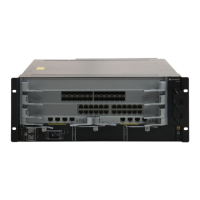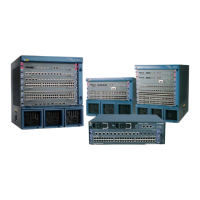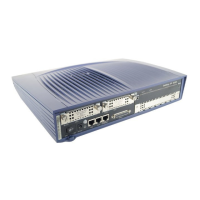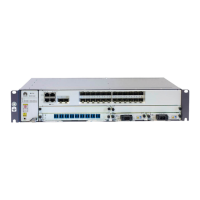5.12.15 Example for Connecting a Sub-interface Enabled with
VLAN Stacking to a VPLS Network
Networking Requirements
As shown in Figure 5-15, VPLS is enabled on PE1 and PE2. CE1 is connected to Switch1
through PE1, and CE2 is connected to Switch2 through PE2. CE1 and CE2 belong to the same
VSI. LDP is used as the VPLS signaling protocol to set up the PW and Martini VPLS is
configured to enable CE1 and CE2 to communicate with each other.
Switch1 forwards the packets sent from CE1 without changing the VLAN tags of the packets.
Selective QinQ is configured on the interface connected to CE2 so that Switch2 adds the VLAN
tag specified by the carrier to the packets sent from CE2.
The packets sent by Switch1 to PE1 contain only one VLAN tag, and the packets sent by
Switch2 to PE2 contain two VLAN tags. Therefore, you need to configure VLAN stacking on
the sub-interface of PE1 connected to Switch1 and connect the sub-interface to the VPLS
network. Then CE1 and CE2 can communicate with each other.
When a switch is connected to multiple CEs, the switch can add different VLAN tags to the
packets from different CEs, that is, packets with different VLAN tags. This saves VLAN IDs
on the public network.
Figure 5-15 Networking diagram for configuring Martini VPLS
CE1
CE2
PE1
PE2
P
Loopback1
1.1.1.9/32
Loopback1
2.2.2.9/32
Loopback1
3.3.3.9/32
GE2/0/0
GE1/0/0
GE2/0/0
GE1/0/0
GE1/0/0
GE2/0/0
GE1/0/0
GE1/0/0
GE2/0/0
GE1/0/0
GE2/0/0
GE1/0/0
Switch2
Switch1
Switch
Interface VLANIF interface IP address
PE1 GigabitEthernet1/0/0 GigabitEthernet1/0/0.1 -
GigabitEthernet2/0/0 VLANIF 20 168.1.1.1/24
Loopback1 - 1.1.1.9/32
PE2 GigabitEthernet1/0/0 VLANIF 30 169.1.1.2/24
GigabitEthernet2/0/0 GigabitEthernet2/0/0.1 -
Quidway S7700 Smart Routing Switch
Configuration Guide - Ethernet 5 QinQ Configuration
Issue 01 (2011-07-15) Huawei Proprietary and Confidential
Copyright © Huawei Technologies Co., Ltd.
294

